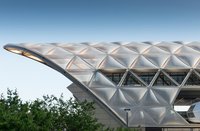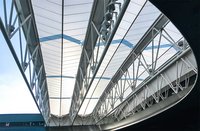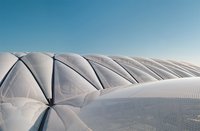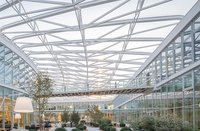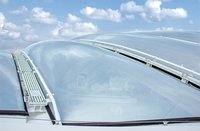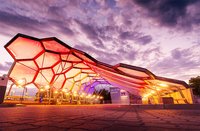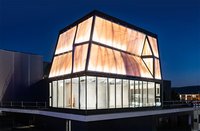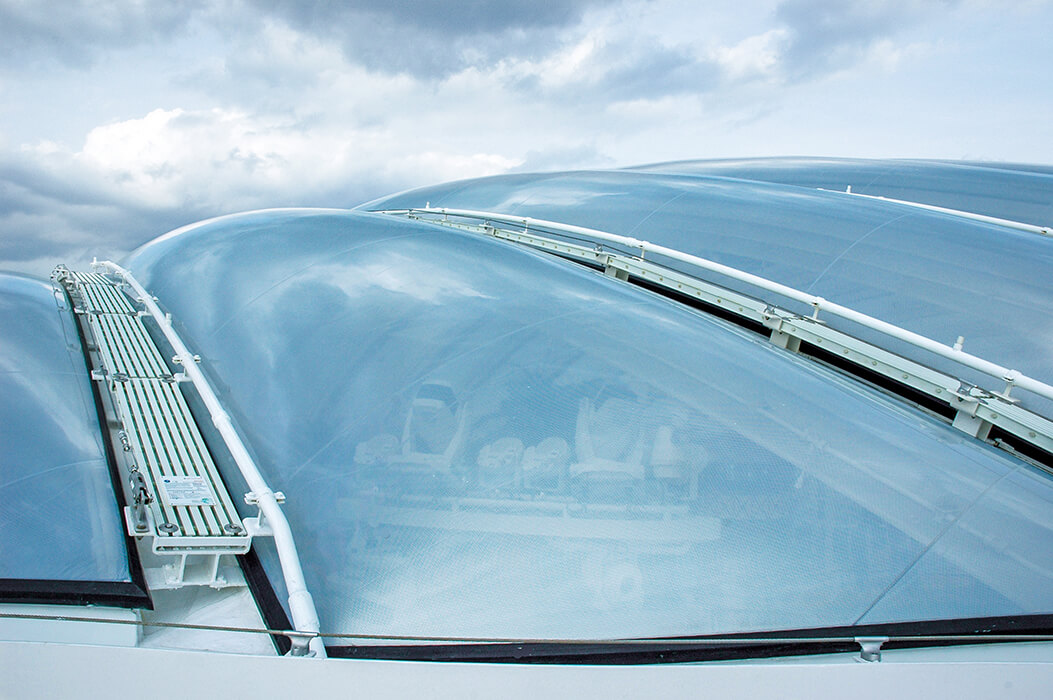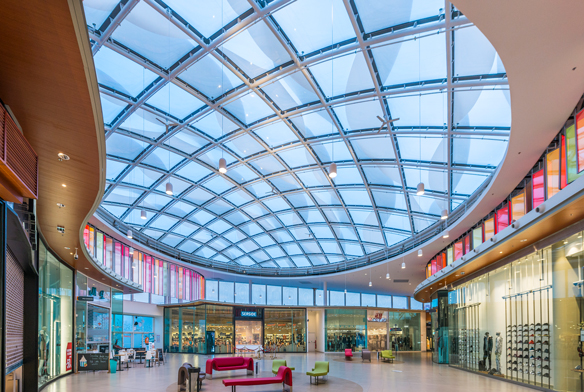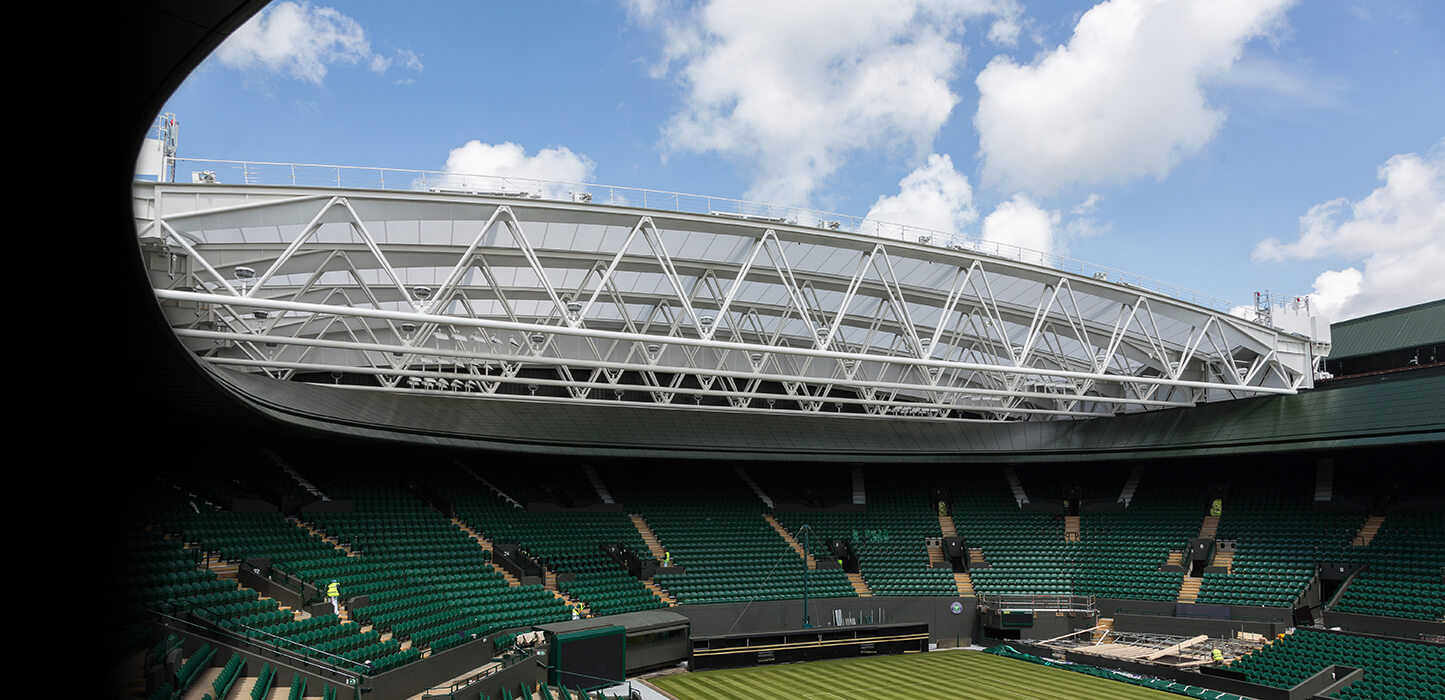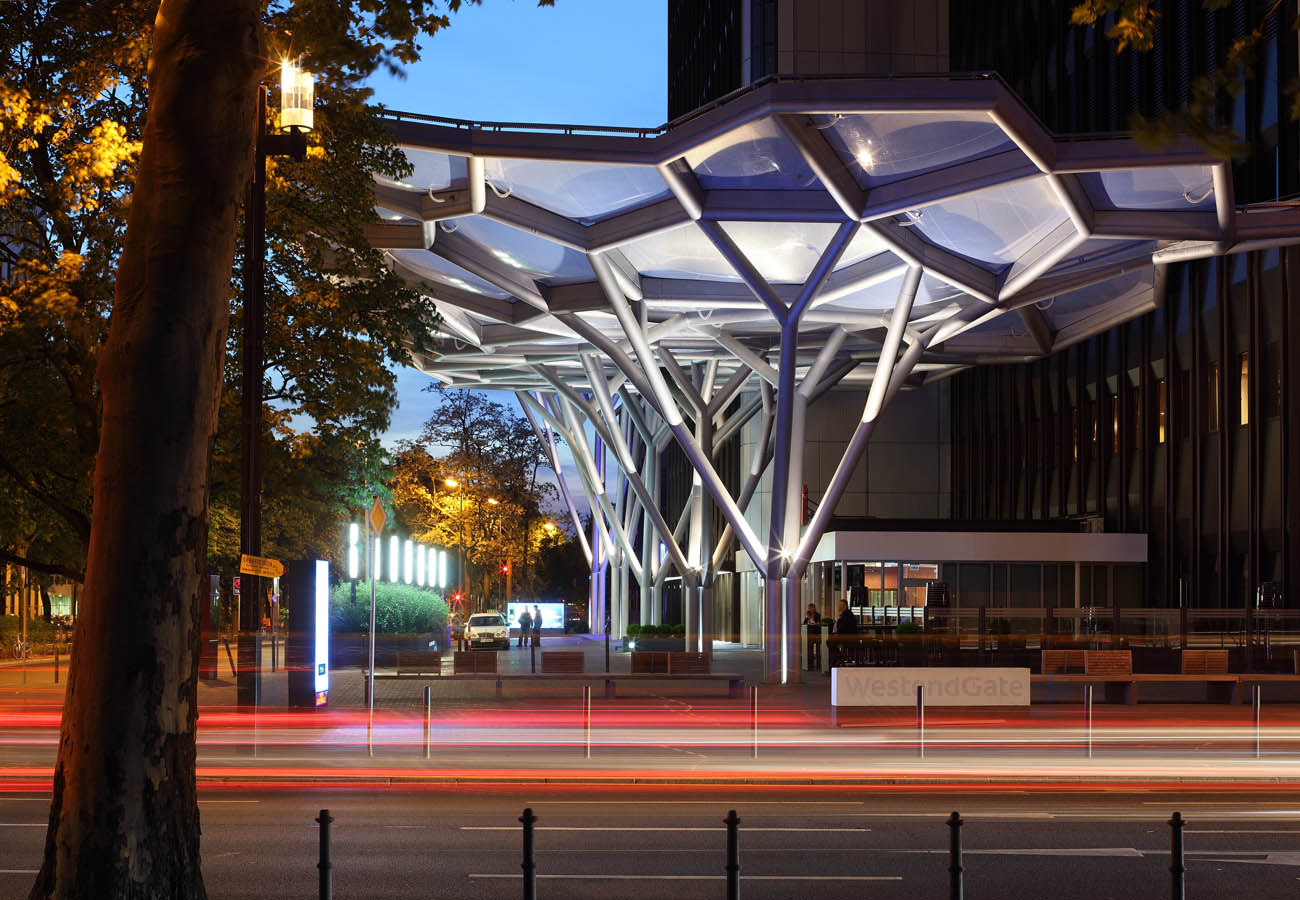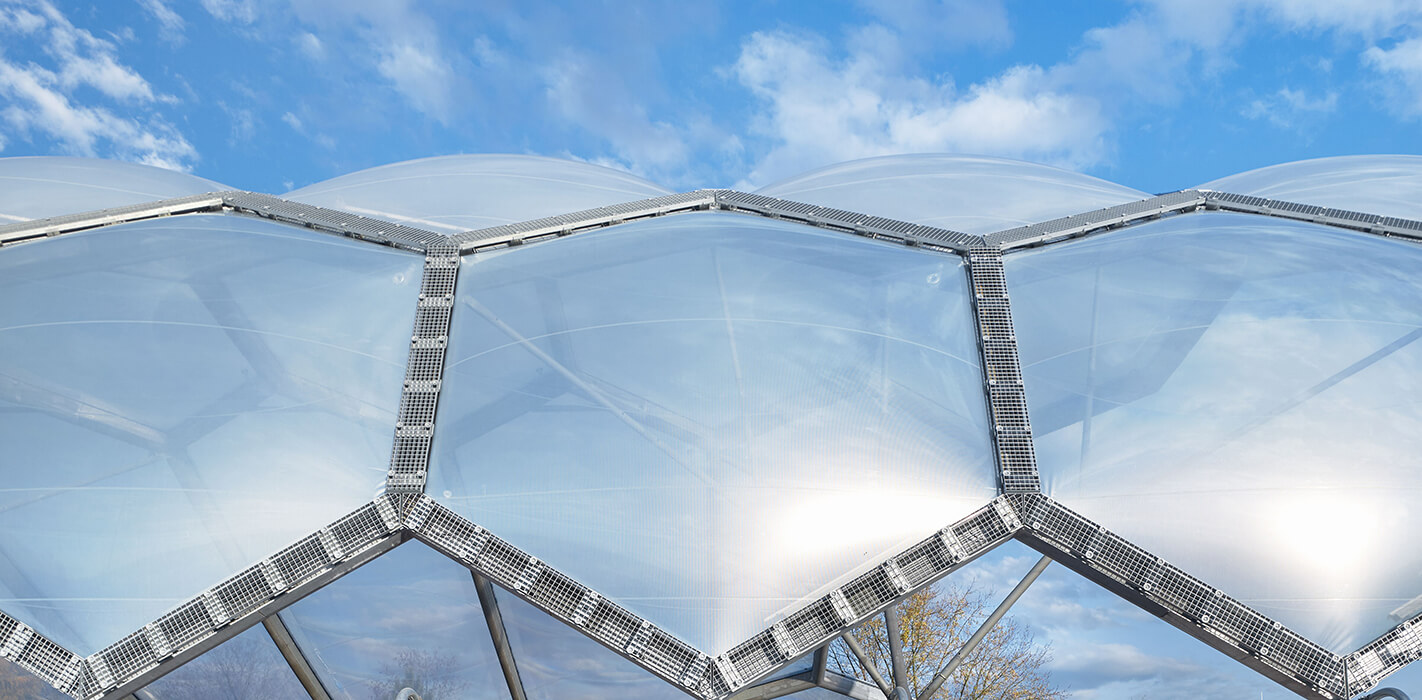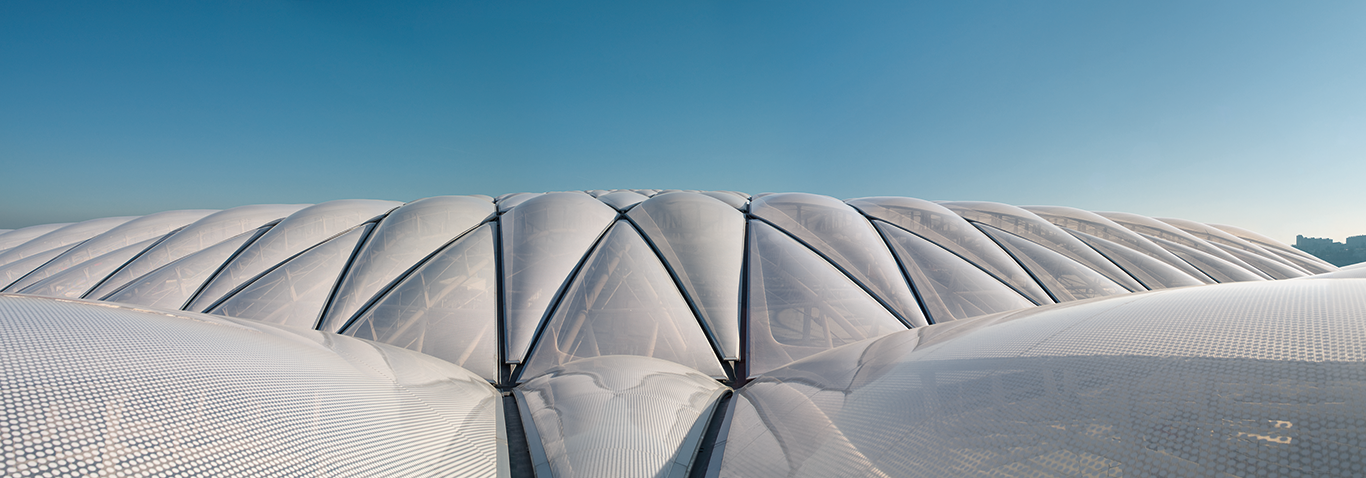
membrane tensile structures by seele: icons of lightweight construction in ETFE
Lightweight structures by seele are based on light materials, efficient load-bearing structures and intelligent systems. The results are fascinating single-layer plate and shell structures and multi-layer ETFE-cushions. Carrying loads, lighting, aesthetics, building physics and even controlling illumination and interior climate are the functions of mono- or multi-functional membrane and ETFE film concepts. seele is able to create delicate, low-weight building membrane skins that have a very high load-bearing capacity yet also achieve a highly aesthetic eloquence. The credibility of the designs is due to their good transparency, carefully distributed translucency or full shading, depending on needs. Light is therefore specifically used as a controllable design element.
Part of the seele repertoire are high-strength engineering textiles (fabrics, mesh fabrics) and film such as:
- PVC-coated polyester fabric (PVC-PES)
- PTFE-coated glass-fibre fabric (PTFE-glass)
- Silicone-coated glass-fibre fabric (silicone-glass)
- Coated or uncoated fluoropolymer fabric
- ETFE-film
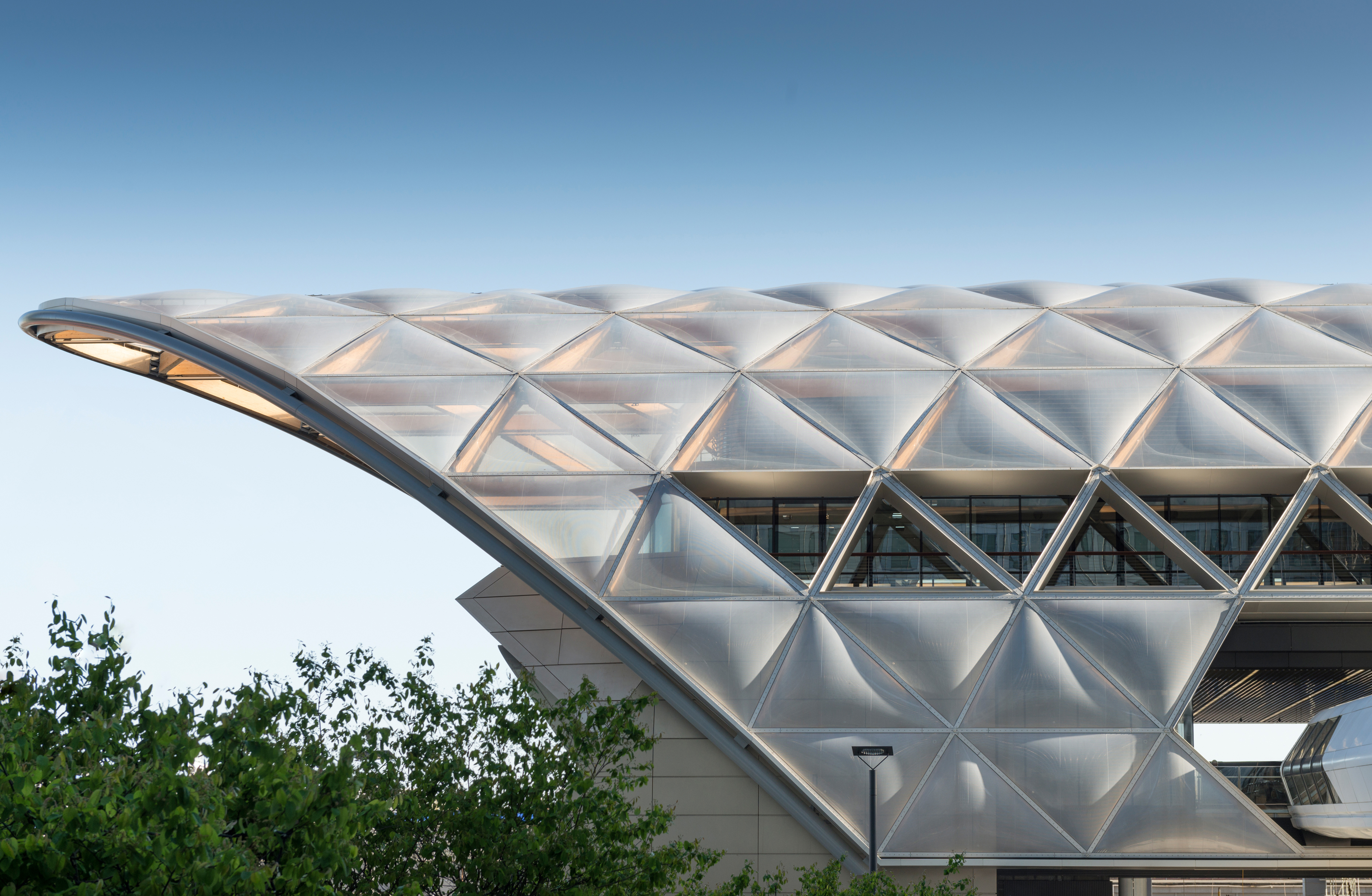
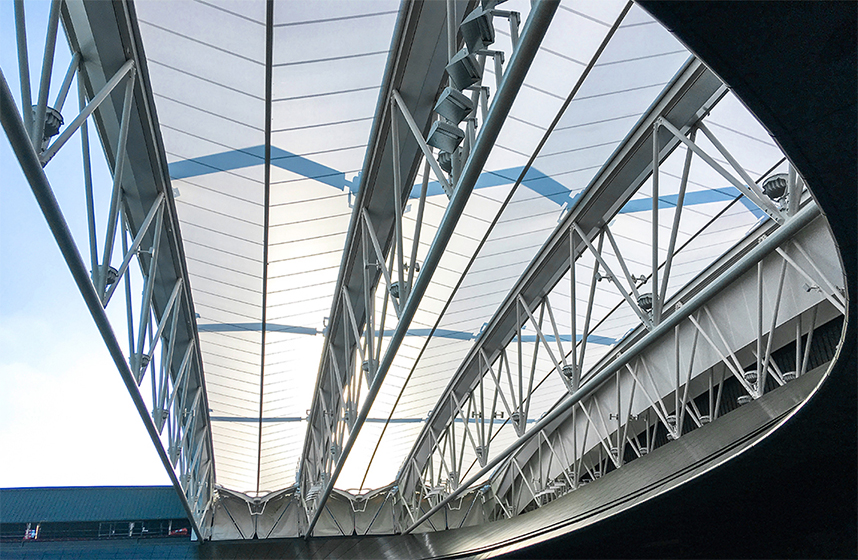
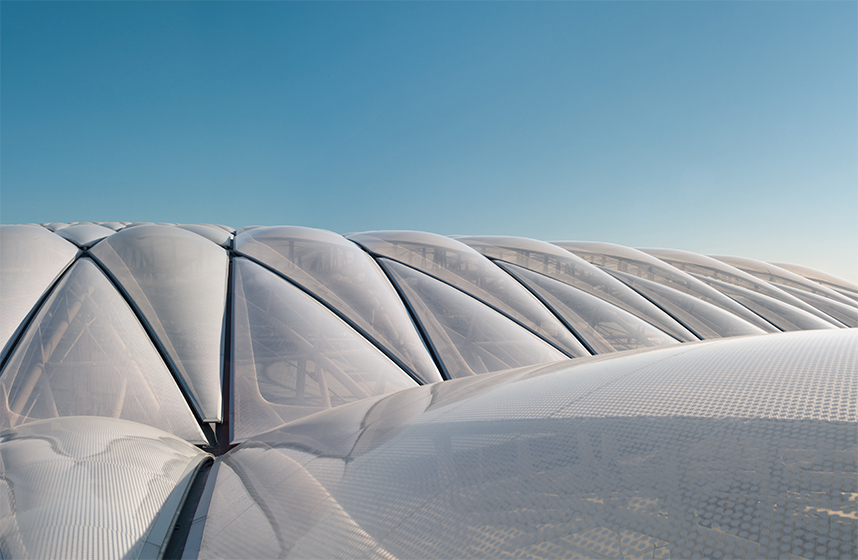
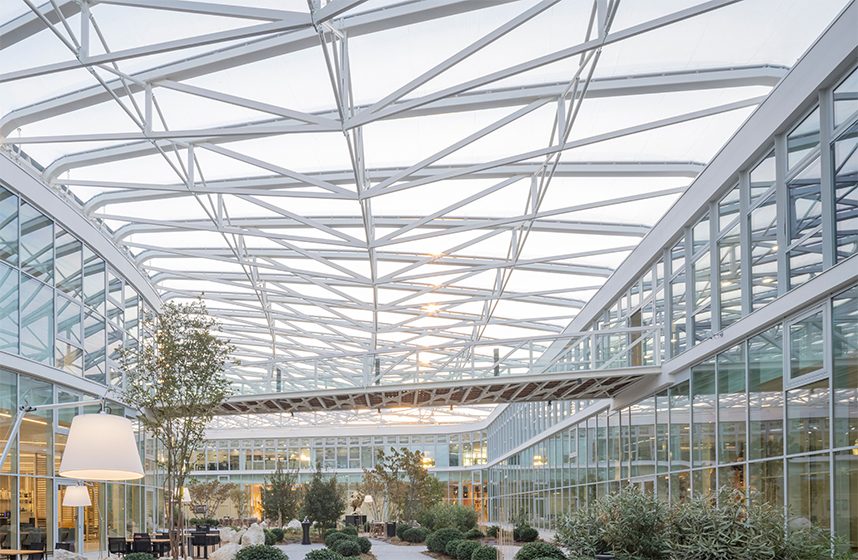
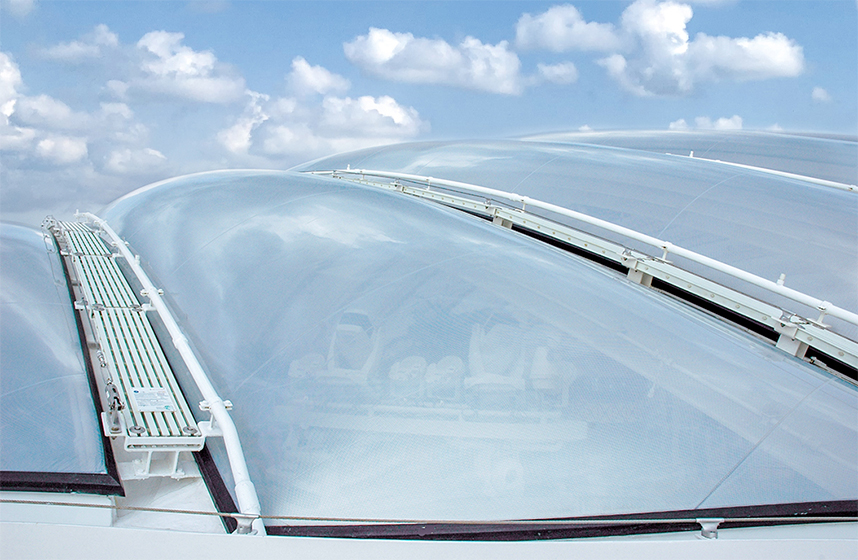
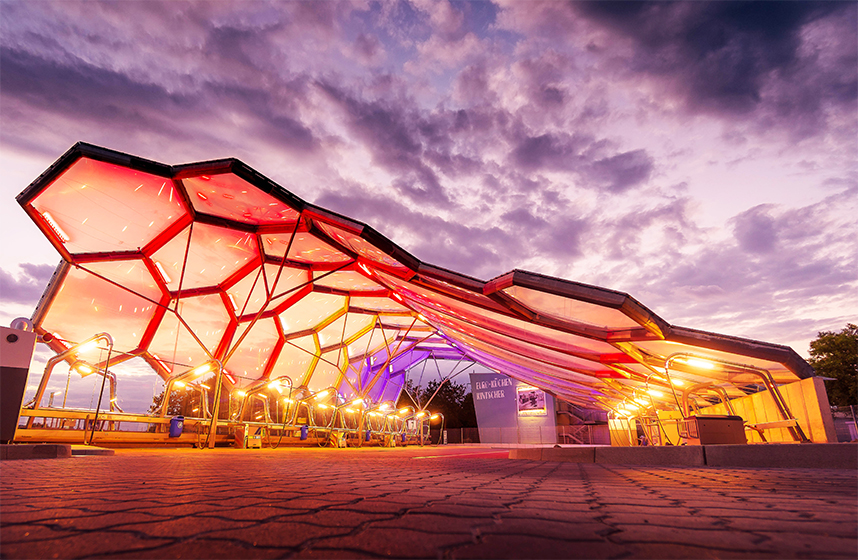
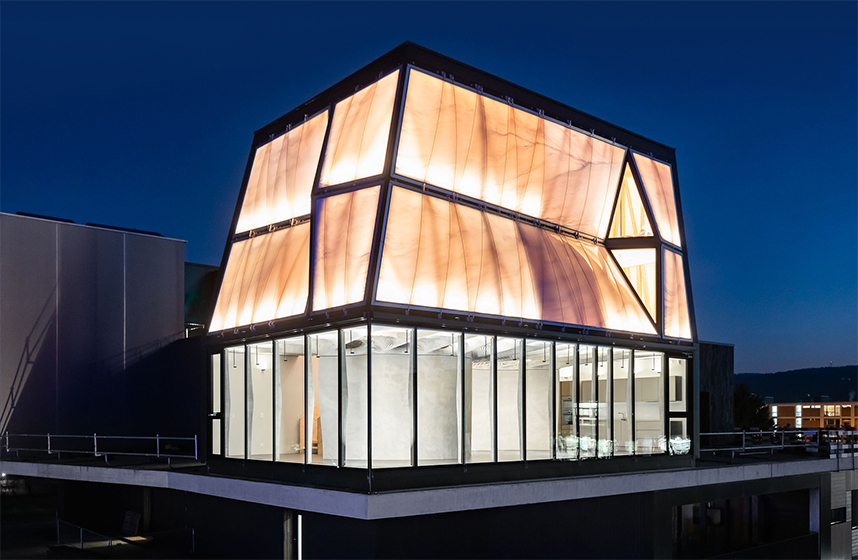
The lightweight membrane structures principle: low in weight, big in ecology, sustainable throughout the life cycle
Light materials, efficient loadbearing structures and intelligent systems. Carrying loads, lighting, aesthetics, building physics and even controlling illumination and interior climate are the functions of mono - or multi - functional membrane and ETFE film concepts. seele is able to create delicate, lightweight building membrane skins that have a very high loadbearing capacity yet also achieve a high aesthetic eloquence. The credibility of the designs is due to their good transparency, carefully distributed translucency or full shading, depending on needs.
Membrane architecture is unprecedentedly sustainable because you need less material, the lifetime is long and the recycling rate is 100%. In particular, the sorting of the different materials is easy, energy-efficient and they can be used in the same way – without the need for upcycling. ETFE for example is 100% circular economic. Indeed, many other products are combinations of more than one material. But ETFE cladding is made from 100 % pure ETFE and remains a high quality ETFE product even after being melted.
Creating open spaces in ETFE with pleasant climatic conditions
A membrane tensile structure is very light, thus allowing the creation of an atrium roof with the minimum amount of material, which is not only very sustainable but also very enjoyable, as the atmosphere inside such an atrium is as close as you can get to that of the open air! An office atrium roof can create enormous added value in office buildings. The printed membrane tensile structures improve the U-value in winter, but also reduces the build - up of heat in summer. Despite the demanding thermal specification, the membrane construction achieves a brilliant spatial experience for the staff.
